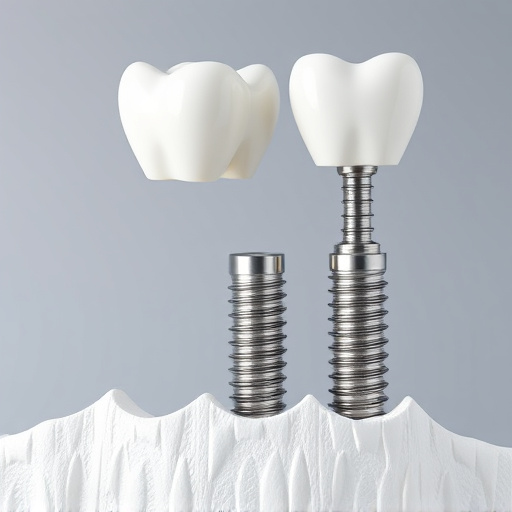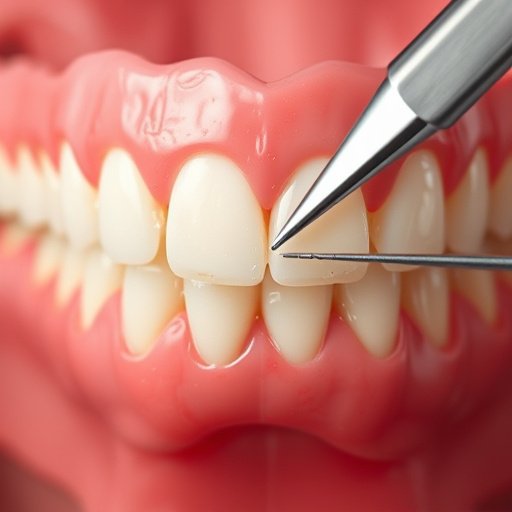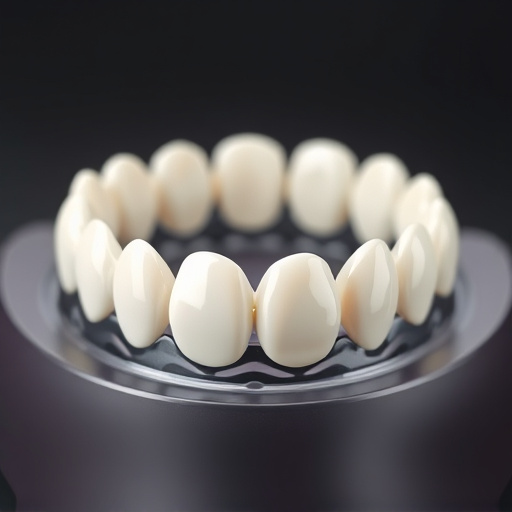Sub-gum fractures caused by trauma or gum disease weaken tooth support, leading to deterioration and potential loss if untreated. The crown lengthening procedure exposes more of the natural tooth beneath the gum line, enabling restoration with crowns or implants. This enhances aesthetics and oral health, facilitates wisdom tooth removal, and promotes better gum care through proper cleaning practices. Aftercare includes a soft diet and regular dental check-ups for optimal healing. In pediatrics, crown lengthening can prevent future complications from impacted teeth, promoting healthier teeth and gums as children grow.
“Discover how crown lengthening, a specialized dental procedure, offers a promising solution for sub-gum fractures. This treatment is designed to address deep cracks and breaks beneath the gumline, often caused by trauma or decay. By gently repositioning bone and gum tissue, crown lengthening reveals more of the natural tooth structure, facilitating better cleaning and restoring oral health. Read on to explore the step-by-step process, benefits, and aftercare tips for this transformative crown lengthening procedure.”
- Understanding Sub-Gum Fractures and Their Impact
- Crown Lengthening Procedure: A Step-by-Step Guide
- Benefits and Aftercare of Crown Lengthening Treatment
Understanding Sub-Gum Fractures and Their Impact

Sub-gum fractures, also known as periodontal fractures, are a common dental issue where the bone and gum tissue surrounding a tooth become damaged or fractured. These fractures often occur due to trauma, periodontitis (inflammation of the gums), or excessive chewing pressure. They can be particularly painful and may go unnoticed until complications arise. The impact of sub-gum fractures is significant as they not only cause discomfort but also weaken the tooth’s support structure. This weakness can lead to further deterioration of the gum line, increased mobility of the affected tooth, and even potential tooth loss if left untreated.
One effective solution for managing sub-gum fractures, especially when the damage extends beyond the gumline, is the crown lengthening procedure. This involves gently moving the gum line and jawbone to expose more of the natural tooth, which can then be restored with a crown or other dental work. By addressing the underlying issue, this procedure not only improves the appearance of the smile but also enhances long-term oral health, often making way for treatments like wisdom tooth removal or the placement of dental implants, and promoting overall gum health through proper teeth cleaning practices.
Crown Lengthening Procedure: A Step-by-Step Guide

The crown lengthening procedure is a precise dental intervention designed to access and restore damaged or decayed areas beneath the gum line. This step-by-step process begins with an initial consultation where the dentist assesses the extent of the sub-gum fracture. Using advanced imaging, they plan the optimal placement for accessing the affected area. During the procedure, local anesthesia is administered to ensure patient comfort. The dentist then carefully creates a small incision in the gum tissue, exposing the tooth crown and the underlying bone.
Next, a portion of the bone surrounding the tooth is gently recontoured to lengthen the coronal portion of the tooth. This step provides enough space for a new restoration or treatment, such as a crown or filling, to be placed. Once the desired length is achieved, the dentist cleans and shapes the area, preparing it for healing. A temporary covering may be applied to protect the exposed tooth, and instructions for aftercare, including proper teeth cleaning techniques, are provided. In some cases, wisdom tooth removal might also be considered as part of the overall treatment plan, especially in children’s dentistry, to prevent future complications related to impacted teeth.
Benefits and Aftercare of Crown Lengthening Treatment

The crown lengthening procedure offers significant advantages for individuals suffering from sub-gum fractures, a common dental issue often caused by traumatic injuries or aggressive tooth decay. By carefully adjusting the gum line to expose more of the natural tooth, this treatment not only enhances aesthetics but also improves overall oral health. One of the key benefits is the ability to restore damaged teeth, effectively extending their crown length and promoting better healing. This process can be life-changing for patients experiencing pain or difficulty chewing due to exposed tooth roots caused by gum recession.
After the procedure, proper aftercare is essential for optimal results. Patients are typically advised to stick to a soft diet immediately post-treatment to avoid disturbing the healing site. Regular routine oral exams become even more critical during this period to monitor the area’s progress and address any concerns promptly. In children’s dentistry, crown lengthening can be a game-changer, ensuring young patients have healthier teeth and gums as they grow up. The procedure’s effectiveness in repairing tooth repair damage makes it a valuable tool for dentists, complementing their routine oral exam practices.
The crown lengthening procedure emerges as a highly effective solution for sub-gum fractures, addressing both cosmetic concerns and dental functionality. By gently reshaping gum tissue, this treatment reveals more of the natural tooth surface, enhancing smiles and promoting better oral health. As discussed in this article, understanding the step-by-step process and its benefits can reassure patients considering crown lengthening as a viable option for their dental needs.














